Remote and Hybrid Work
Why Workations and Communities Matter in the Future of Work

August is that strange in-between season. Some people are off the grid at the beach, others are juggling kids and emails from a cabin, and a few are quietly holding down the fort — joining early calls with cameras pointed at empty virtual squares.
In a hybrid or remote setting, this disconnect becomes even more noticeable. Calendars look half-full, status messages are vague at best, and no one’s really sure who’s still in the game and who’s temporarily checked out.
For HR leaders, team managers, and workplace strategists, this isn’t just a seasonal lull — it’s a cultural challenge. Rhythm, momentum, and team connection don’t pause for summer. They still need attention — even when half the team is scattered across time zones and vacation spots.
That’s where workations and intentional communities come in, not as trendy perks, but as practical tools for syncing up, building belonging, and keeping hybrid culture alive.
The hybrid blues: a subtle threat to team culture
It’s hard to believe it’s been nearly five years since that first, sudden shift to remote work. In some ways, it still feels like yesterday.
Let’s be honest — at first, it was a dream. No more early morning commutes, dressing for the office, or navigating rainy traffic just to sit under fluorescent lights. No more constant interruptions or hallway small talk. It felt like freedom — deeply convenient, even refreshing.
But as months turned into years, a different reality set in.
The lines between work and rest blurred. Days began to feel like a loop from Groundhog Day — wake up, open the laptop, make the same trip from bedroom to kitchen to desk. The casual chats and human friction that once shaped team energy? Replaced by disjointed messages and scheduled check-ins.
New hires join the company — and often stay invisible. Gone are the moments of informal introductions or chance encounters. Now, unless they work directly with someone, their circle rarely extends beyond a couple of video calls or a string of chat bubbles in yet another notification thread.
It’s not burnout in the traditional sense. It’s a kind of ambient disconnection. Quiet, but cumulative.
At the same time, few employees want to go back to the office full-time — and it’s not just about convenience. People have restructured their lives around this flexibility, and for many, it genuinely boosts focus and performance.
Still, spending three years wrapped in a blanket like a remote-work burrito, multitasking between spreadsheets, stir-fry, and folding laundry — that’s not the answer either.
Hybrid work, when done well, offers a middle ground. It supports both the neurological refresh of a commute and the grounded energy of a physical workspace — without demanding five days in-office.
People want a place where they can show up and feel part of something larger. Not just through back-to-back Zoom tiles or an endless scroll of pings and replies, but in real, human ways. That sense of belonging can’t be fully digitized — it needs space, presence, and intention.
And this is the new mandate for HR leaders: not just to provide tools for productivity, but to create spaces where people want to work together, feel connected, and stay engaged.
Workation: more than just working from the beach
Workation — a blend of “work” and “vacation” — has long outgrown the cliché of typing from a sun lounger. It’s not about escaping your to-do list. It’s about approaching it from a fresh angle.
In reality, a workation is a well-planned team getaway where productivity meets real connection. A few times a year, the team can get together somewhere outside their usual setting to brainstorm, talk strategy, spark new ideas — and finally meet beyond profile pictures and emojis.
- Why does it work?
A change of scenery helps reset your mind, ease fatigue, and clear out the mental clutter. - Face-to-face time builds trust. Communication becomes easier, more open, more human.
- Shared experiences — from morning coffee to evening walks — bring people closer in ways that video calls never quite can.
Remote work gave us more freedom — we can work asynchronously, across time zones, in our own rhythm. But still, nothing replaces the power of a real-life meeting, even if it’s just once or twice a year.
That’s where workation shines — it bridges the gap. Team members stay on track with their tasks, but now surrounded by new energy — maybe ocean air or mountain views. A fresh environment, different routines, unfamiliar streets — all of this not only lifts your mood but often unlocks ideas that never came up back at the desk.
And there’s another layer: connection. Meeting in person with someone you usually only ping through a chat app creates a totally different kind of bond. Let’s be honest — talking through projects over dinner with a sunset view just hits differently.
Overcoming the real barriers to workations
Workations and team getaways are awesome — but let’s be real: HR leaders often face some real hurdles.
1. Budgets aren’t unlimited, and not every company can fly the team halfway across the world.
But that’s okay. You can do something local, close to the office, or even just a quick one- or two-day break away from the usual space. Trust me, even a small change of scenery helps the team recharge and get that spark back.
2. Logistics can be tricky too.
The key is to talk with your team early, pick a date that works for most people, and plan well ahead. That way, nobody gets caught off guard and everyone can adjust their schedules.
3. Some skeptics might say, “This is just fun and games — a distraction from real work!”
Actually, it’s the opposite. It’s a chance to meet face-to-face, hash out ideas in real time, and just be together. When people feel happy and valued, productivity and commitment naturally rise.
4. And please — never force anyone to join.
Teams are made up of all kinds of people. Some might be introverts who find group events draining or stressful. That’s totally normal! Saying no doesn’t mean they’re disconnected or don’t care. They just need a different way to connect — and there are plenty of other options to build bonds.
Community is the new office
When employees don’t bump into each other at the same coffee machine every day, culture and connection don’t just happen on autopilot.
For Gen Z and Millennials especially, a sense of belonging and shared purpose at work matters just as much as the paycheck.
In a hybrid world, community has to be built — on purpose. That can mean:
- Interest-based groups or internal professional circles
- Virtual spaces for off-topic chats — your digital “third places”
- Local meetups or hubs for people in the same city
Think of it like a fandom. People from all walks of life bond over a shared obsession — swapping theories, creating memes, planning meetups, or just vibing with people who get it. That’s the kind of connection today’s workplace should aim for — not awkward icebreakers, but real, organic energy.
And just like the best fandoms, a true workplace community makes space for everyone — no matter their background, abilities, or working style. That means planning meetups with accessibility in mind. Respecting different cultures and caregiving responsibilities. Making sure remote workers, quiet voices, and new joiners don’t get left out of the loop.
Because when people feel safe to show up as their full selves — that’s when the workplace becomes a community and a catalyst for great work.
The 3C model for retaining hybrid talent
How do you keep your culture alive when your team is scattered across time zones and home offices? Here’s a simple, human-centered framework that actually works:
1. Connect – Create space for real conversations
People don’t bond over meeting agendas or weekly reports — they bond over shared stories, bad jokes, and casual check-ins. Create intentional moments for connection:
- Plan in-person meetups, even small ones.
- Keep a casual team chat alive (memes welcome).
- Try “no-agenda” coffee calls where people can just show up and be themselves.
These soft spaces build real trust, and that trust carries teams through the hard days.
2. Co-create – Let people shape the culture
Culture isn’t something you announce — it’s something you build together. Invite your team to co-create how they want to work:
- Let them design team rituals (Friday shoutouts, monthly idea jams, digital gratitude walls).
- Ask for input on flexible work policies — they know what works best.
- Open up conversations around what makes them feel like they belong.
When people have a hand in building the culture, they feel more ownership — and more connected.
3. Celebrate – Make wins visible, especially remote ones
In hybrid setups, it’s too easy for great work to stay invisible. Make celebrating people a habit:
- Highlight wins in all-hands meetings.
- Give public shoutouts across tools your team actually uses.
- Celebrate small stuff, not just big KPIs — creative problem-solving, acts of kindness, someone stepping up.
Remote employees in particular need to feel seen. Recognition doesn’t just boost morale — it reinforces the culture you want to keep.
What the future of work means for HR strategists
Work is no longer confined to square footage or office leases.
Founders and HR leaders should think less about how to fill desks — and more about how to spark connection. That means investing in shared experiences, intentional gatherings, workations, and strong internal communities. These aren’t distractions from “real work.” They are the work. They build culture, trust, and long-term retention.
Engagement isn’t a bonus anymore — it’s a foundation.
The office is no longer the heart of your culture. Real culture lives in moments of trust, vulnerability, shared wins, and even shared setbacks — whether your team is across the hallway or across time zones. Leaders who embrace this shift unlock something powerful: teams that don’t just collaborate, but genuinely connect.
So how do you keep people energized, aligned, and excited — even if oceans and calendars separate them?
You build rituals. You invest in time together. You watch for early signs of disconnection — and act before burnout sets in.
When’s the right time to hit refresh?
Here’s when you should seriously consider organizing a workation, offsite, or team reset:
- Team energy is low, even after a long weekend
- Creative output feels stuck or overly repetitive
- You’re onboarding multiple new teammates at once
- People have stopped turning on their cameras — or talking much at all
- Feedback loops are breaking down
- You’re seeing more silos and fewer shared ideas
- The vibe in your team messages is so quiet, you half expect a tumbleweed to roll through
A well-timed gathering, online or in person, can shift everything. It doesn’t have to be expensive or overly structured. It just needs to feel human.
In the end, remote and hybrid teams don’t need more rules — they need more reasons to care. That’s your job as a strategist of the modern workplace: not to bring people back, but to bring them closer.

-

 Collaboration5 months ago
Collaboration5 months ago18 Experts Share Tips for Businesses Switching to Remote Work
-
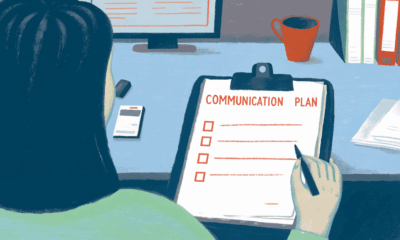
 Communication8 months ago
Communication8 months ago6 Communication Plan Templates With Examples
-
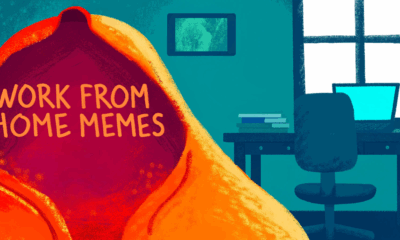
 Collaboration7 months ago
Collaboration7 months ago30 Work From Home Memes: Funny Work Memes to Make You Laugh
-
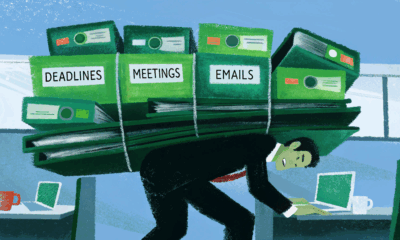
 Collaboration8 months ago
Collaboration8 months ago6 Tips for Lifting the Burden of Too Many Responsibilities
-

 Productivity7 months ago
Productivity7 months agoSuper True Mental Health Memes You’ll Probably Relate To
-
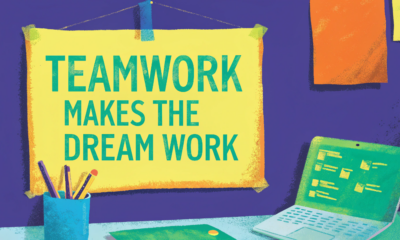
 Collaboration9 months ago
Collaboration9 months ago35+ Collaboration Quotes to Celebrate Teamwork
-

 Collaboration8 months ago
Collaboration8 months ago7 Easy Strategies for Effective Team Communication
-
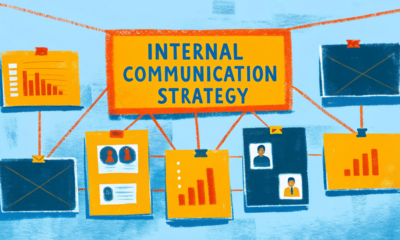
 Collaboration8 months ago
Collaboration8 months agoThe Definitive Guide to Creating an Internal Communication Strategy




